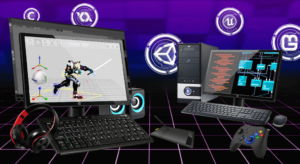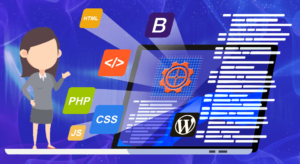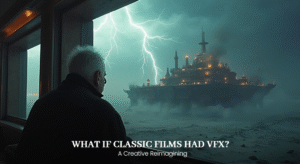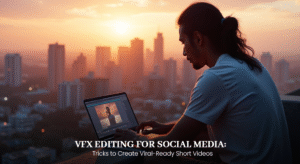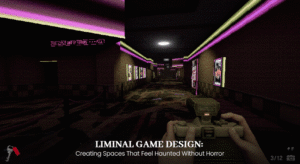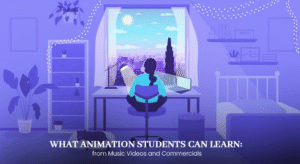
Explore the Mesmerizing Fusion of Animation and Augmented Reality (AR)
Animation and Augmented Reality are two technologies that have revolutionized the way we perceive the world around us. Animation is creating moving images using computer software or by hand drawing each frame. It has been used for decades in movies, television shows, and video games to bring characters and stories to life. Augmented Reality, on the other hand, is a technology that overlays digital information into the real world. This can be done through devices such as smartphones or smart glasses, which use cameras and sensors to detect the user’s surroundings and add digital elements to them.
Animation and Augmented Reality (AR) have recently converged to produce a genuinely engaging and immersive experience. This seamless merger of technologies has created new opportunities for interactive experiences, entertainment, and storytelling. This blog will explore the fascinating world where animation meets augmented reality, examining its uses, effects, and amazing future potential.
Usage of Animation & AR In Various Industries
Animation has come a long way since its humble beginnings. From hand-drawn animation to computer-generated imagery (CGI), advancements in technology have played a pivotal role in pushing the boundaries of what is possible. With the introduction of AR, animation has found a new dimension to explore and create immersive experiences.
Animation and AR in Entertainment
The fusion of animation and AR has revolutionized the entertainment industry. With the rise of smartphones and AR-capable devices, consumers can now experience their favorite animated characters and worlds in the real world. Companies like Disney have embraced this technology, bringing beloved characters to life through AR apps and experiences. Imagine interacting with your favorite animated characters right in your living room or exploring enchanted lands through your mobile device.
Education and Learning
The potential for using animation and augmented reality in education is enormous. It can change static learning processes into lively and dynamic ones. For instance, courses in anatomy can be transformed into immersive tours of the human body, historical events can be reenacted in augmented reality settings, and interactive animations can be used to illustrate complicated scientific ideas. For instructors and students alike, this merger offers up a whole new universe of possibilities.
Advertising and Marketing
AR has demonstrated its potential as a marketing and advertising tool. Brands can give their customers interactive and memorable experiences by combining animation and Augmented Reality. Think about virtually putting on clothing before buying it, picturing furniture in your living room before making a purchase, or communicating with a virtual representative who walks you through a product demonstration. These interactions strengthen brand engagement and make a lasting impression on customers.
Gaming and Interactive Experiences
Animation and AR are a match made in heaven for the gaming industry. AR games blend the virtual and real world, allowing players to interact with digital characters and objects in their physical environment. Pokémon GO, one of the most successful AR games, is a prime example of how animation and AR can merge to create addictive and immersive gameplay experiences.
Architecture and Design
AR has also found its way into the architecture and design fields. Through the fusion of animation and AR, architects can create virtual models of their designs and overlay them onto real-world spaces. This enables clients and stakeholders to visualize and explore architectural concepts more tangibly and interactively. The combination of animation and AR offers a powerful tool for architectural visualization and can significantly streamline the design and approval process.
Healthcare and Medical Applications
The healthcare sector has seen intriguing applications for the merging of animation and AR. Augmented Reality can help medical personnel visualize difficult anatomical structures and medical procedures, which makes it simpler for them to convey complex concepts to patients. During operations, surgeons can superimpose virtual guidelines and real-time data onto a patient’s body, improving precision and lowering risks. Animation and AR can be used to educate patients by presenting medical diseases, therapies, and the effects of specific medications in a way that is visually appealing and simple to understand.
Tourism and Travel Experiences
AR and animation are transforming the way we explore and experience travel destinations. Tourists can use AR apps on their smartphones or wearable devices to enhance their visits to historical sites, landmarks, and museums. Augmented Reality can overlay historical information, virtual tour guides, and interactive elements onto the physical environment, providing an immersive and educational experience. Imagine walking through ancient ruins and seeing them restored to their former glory through animated overlays or having virtual conversations with historical figures.
Sports and Live Events
To give fans truly memorable experiences, sports and live events have welcomed the convergence of animation and augmented reality. By superimposing real-time statistics, player data, and dynamic visualizations on the screen during a sports broadcast, augmented reality can improve the viewing experience. In addition, stadiums may use AR to provide visitors with immersive and interactive features like virtual replays, player profiles, and interactive games that are all perfectly incorporated into the live setting.
Training and Simulation
In training and simulation contexts, the use of AR with animation has been beneficial. This combination offers a safe and regulated environment for learning and practice, from industrial and emergency response simulations to military and aviation training. AR overlays can give trainees detailed instructions, immediate feedback, and interactive components to help them learn and retain more information. Organizations may lower costs, increase training effectiveness, and minimize risks by modelling complicated scenarios using animation and augmented reality.
Social Media and User Engagement
Social media platforms and user engagement have been greatly changed by the inclusion of animation and augmented reality. To change their appearance, add dynamic aspects to their videos and photographs, and produce original and shareable content, users may now employ AR filters and effects on apps like Instagram, Snapchat, and TikTok. Self-expression, creativity, and social relationships have all been revolutionized by this merger, which has also created endless opportunities for personal branding, narrative, and entertainment.
The fusion of animation and AR is still in its early stages, but its potential is immense. As technology continues to advance, we can expect even more realistic and seamless integration of digital elements into the real world. The lines between the virtual and physical will continue to blur, offering limitless opportunities for creative expression, entertainment, education, and problem-solving.
Animation and Augmented Reality have come together to create a world of limitless opportunities and life-changing experiences. This synergy has the potential to transform numerous industries and improve how we connect with the outside world, from entertainment and education to healthcare, architecture, and beyond. It is essential to recognize and address ethical issues while promoting innovation and creativity as we explore the fascinating frontier of animation and and augmented reality. Future possibilities are limitless and as technology develops, so too will the fascinating union of Animation and Augmented Reality. So be ready for an incredible voyage into the depths of immersion and imagination, where animated delights lie around every corner.



